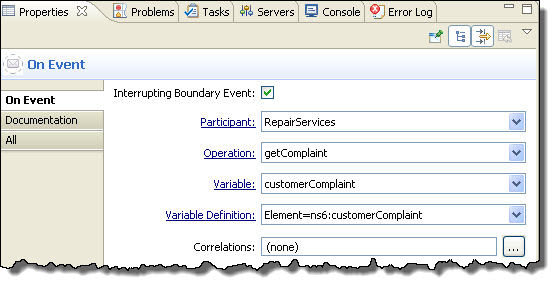Informatica ActiveVOS
- Informatica ActiveVOS 9.2.5
- All Products


<bpel:eventHandlers> <bpel:onEvent aei:boundaryEvent="interrupting" element="ns6:customerComplaint" ext1:handleIMAInEnclosingScope="true" operation="getComplaint" partnerLink="RepairServices" variable="parameters"> <bpel:scope> <bpel:assign ext1:mutexTransitions="yes"> <bpel:sources> <bpel:source linkName="L5"/> </bpel:sources> <bpel:copy> <bpel:from variable="parameters"/> <bpel:to variable="customerComplaint"/> </bpel:copy> </bpel:assign> </bpel:scope> </bpel:onEvent> </bpel:eventHandlers>